Seasons – January 2022
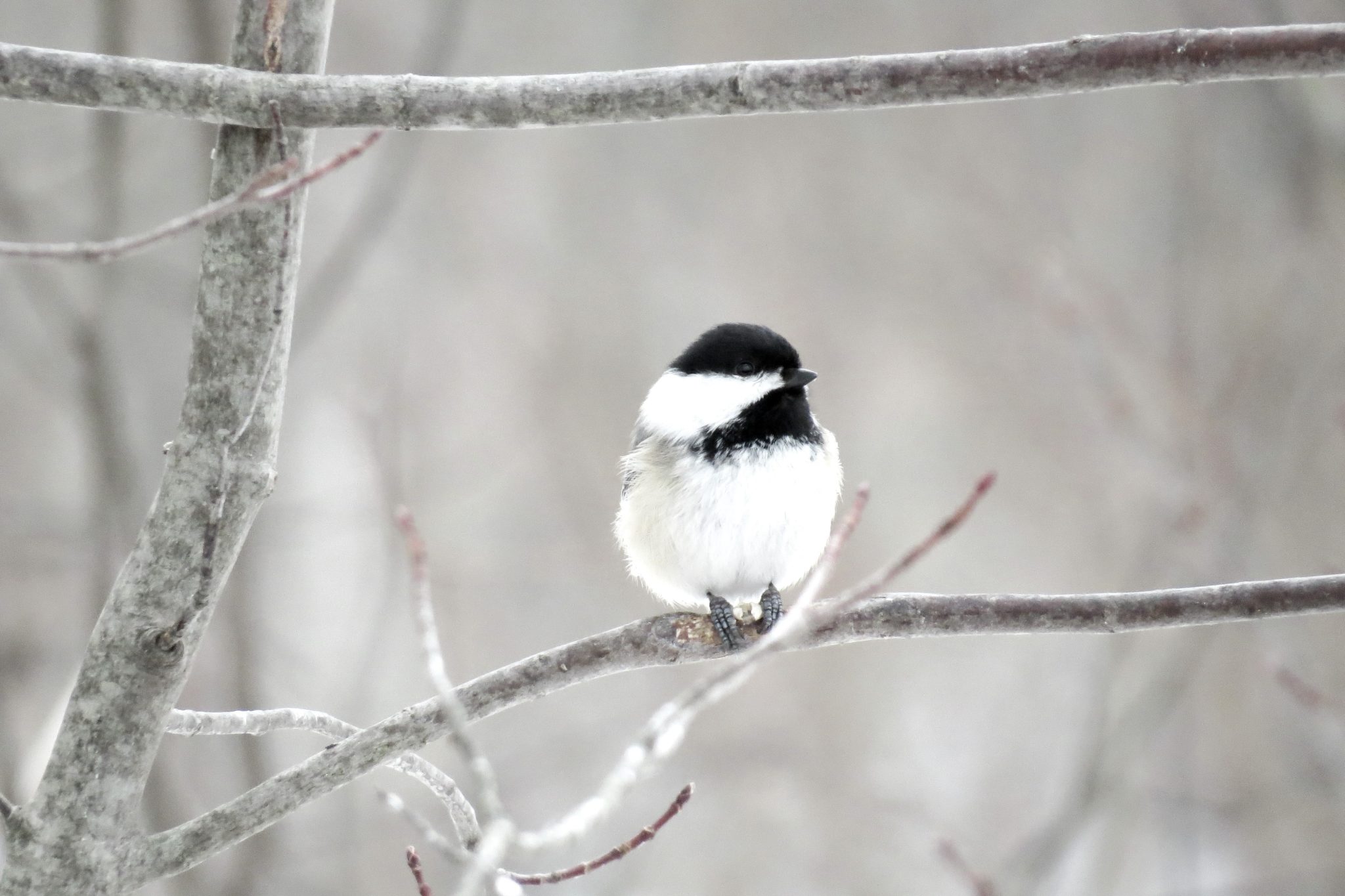
From the Plateau Land & Wildlife Management Team
Whew. The holidays are done. The new year has rung in. Winter is upon us and cold weather has arrived in Texas.
With 2022 underway, property taxes are on the forefront of many of our landowners’ minds. Not only are property tax bills due, but now is the time to file certain late protests or motions to correct appraisal rolls. The beginning of the year is also a great time to consider your property tax valuations, and to begin preparing if you plan to make the switch to Wildlife Management.
This Seasons Newsletter is full of helpful considerations and tips for landowners including articles and blogs from our expert team of biologists and property tax consultants, attorneys from Braun and Gresham LLC, real estate professionals, and more. Read blogs and articles covering open space valuations, property tax deadlines, invitations to virtual events covering your property tax valuation options, and more.
Though 2021 has drawn to a close, being proactive with your property taxes in 2022 can help to ease the burden of transitioning in the new year. As always, we’re here to help if you need us. Cheers to a new year!
Until next Seasons,
The Plateau Team
Table of Contents
New Year’s Resolutions for Landowners
Open Space Property Tax Valuations & Wildlife Management
Service Spotlight: Winter Webinar Series
Eminent Domain: Your rights as a landowner
News for Texas Landowners
New Year’s Resolutions for Landowners
By PLW Staff
The start of a new year is the perfect time for evaluation – a time of reflecting and looking forward.
As you make plans for the new year, start by taking some time to review the Wildlife Management Plan for your property. Take note of the recommended activities in the plan for this year. Then, take a walk around your property to see if the plan and the land are in sync. If the property has changed (ice storm, wind event, drought) or your objectives have changed (managing for whitetail or improving native plant populations,) the plan may need an update. Be sure to add some notes to your management plan about any changes, as well as your observations about the property.
You can also use this guide of commonly needed stewardship practices – resolutions if you will – to create a list of activities. Or, work backwards: create a vision for what you want your property to look and feel like, then determine what practices will best help you reach those goals.
- Improve butterflies, bees, and other pollinator populations by spreading native wildflower seed this spring.
- Keep accurate logs of your management activities by keeping a logbook nearby; at your property, or in the vehicle/UTV you use around the property.
- If your property changed in size (such as adding acreage or selling off any acreage) or the legal ownership changed (transferred from a property owner’s name to an LLC) landowners must update/refile their plan and submit a new application with their Central Appraisal District.
- Learn which species to watch for on your own property by tracking bird migration forecasts in real-time and with tools like BirdCast.
- Create a monthly maintenance calendar. Include reminders for important tasks, such as refilling feeders, as well as maintenance items, such as brush clearing or fire ant treatment.
- Pick the seed head from grasses and blooms you like on your property and replant. They’re growing natively for a reason.
- Evaluate and track wildlife populations on your property with Camera Surveys.
- Nurture native bird species by completing any brush management before the bird breeding season in March.
- In the late Spring, remember to walk a field before mowing, and look out for any newborn fawns.
- Plan summertime projects now. If you’re DIYing, you’ll be ready to roll at the first hint of nice weather. If you’re hiring a contractor or other professional, getting your bids and contracts in place now will save you from competing with the spring rush.
- Clean out nest boxes and remove any debris or leftover nesting material from the previous year
- Late winter through spring is an ideal time to reduce feral hog numbers before spring nesting/fawning.
- Remember, not all predators need to be removed. That rat snake that scared you up a tree is the perfect natural pest control for mice and rats.
- For the best chance of growth, plant woody plants such as trees and shrubs in the winter.
- Don’t be so quick to burn that brush you cleared; brush piles make perfect shelters for small critters looking to escape the elements.
- Take advantage of native plants to minimize erosion and improve soil health. Plants are the natural solution for many conservation challenges.
- Utilize maps when possible, mark areas where feeders, water sources, nest boxes, etc. are located. Draw areas where brush management, erosion control, fire ant treatment, etc. occur.
- Explore new technology: property management innovations can help landowners accomplish goals more efficiently. For example, live video feed game cameras, which allow users to log in and stream live video of their property directly to their phone, are a great option for security as well as monitoring wildlife.
As a property owner, making and following through on resolutions to manage and improve your property will pay dividends this year and beyond. As property tax bills come due, now is the time to file certain late protests or motions to correct appraisal rolls. The beginning of the year is also a great time to consider your property tax valuations, and to begin preparing if you plan to make the switch to Wildlife Management. Don’t let it stress you out. Call Plateau and ask for help and guidance.
If you have questions or would like more information about appropriate Wildlife Management activities for your property, please contact us at (512) 894-3479 or [email protected].
Back to TopBack to Top
Open Space Property Tax Valuations & Wildlife Management
By Shane Kiefer, Chief Operating Officer, Director Of Ecological Services, Certified Wildlife Biologist, Senior Property Tax Consultant
Texas landowners have an option to maintain substantially lower property taxes on rural land under “open-space” valuations, also called 1-d-1 valuations after the section of the Texas Constitution that authorizes them. While many people call them ag or timber “exemptions”, these are not tax exemptions at all. Open-space is a special valuation that assigns land a value based on its “productive capacity” rather than its real estate market value.
There are three types of open-space valuations: 1) agricultural use, 2) timber use, and 3) ecological laboratory (Eco Lab). It is worth noting that the original “ag use” valuation, also called 1-d, is still available to landowners who derive more than half their income from farming or ranching. However, since 1-d landowners can easily qualify for 1-d-1 valuation and get the same savings with less annual paperwork, 1-d-1 valuations are much more common, even for full-time producers.
Qualifying for Ag or Timber Open-Space Valuation:
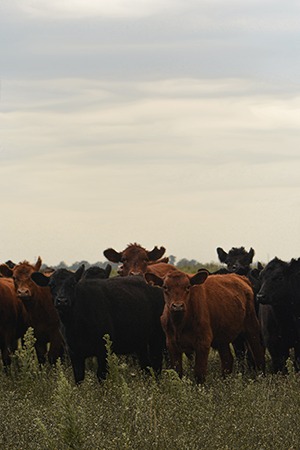 To qualify for agricultural or timber use, the property must have been used for one of these purposes for at least 5 of the preceding 7 years:
To qualify for agricultural or timber use, the property must have been used for one of these purposes for at least 5 of the preceding 7 years:
- Agricultural use – which includes producing crops or raising domesticated plants for livestock or human use, raising or keeping livestock, raising certain exotic animals to produce human food or other items of commercial value, beekeeping for production of commercial products, wildlife management, and likely includes using land for the production of any commercially valuable livestock, fish, or poultry product
- Timber use – which means that the land is actively devoted to the production of timber or forest products for income
In addition to the “5 of 7” time period or “history” test, the agricultural or timber use must also be:
- The primary (aka principal) use of the property – meaning it takes priority over other uses
- Conducted to the degree of intensity generally accepted in the area – meaning to the same level as a typical producer of that product in that area
The law does not set a minimum size requirement for land to qualify for most agricultural or timber uses. However, smaller properties must be able to demonstrate they are using the property to the degree of intensity typical for the area. Beekeeping as an agricultural use is restricted by state law to properties between 5-20 acres.
Landowners must apply for this special appraisal status by April 30th, though it is possible to file later by paying a penalty. Once granted, there is no need to reapply in subsequent years unless the ownership, size, or use of the property changes or if the appraisal district requests a new application. The land’s value will be assessed based on its productivity in relation to the type of agricultural or timber use. For example, irrigated cropland will have a higher productivity value than native pasture used for grazing. These productivity values are assessed according to land use categories on a county-wide basis.
Qualifying for Eco Lab Research Valuation:
To qualify for Ecological Laboratory Valuation, the primary use of the property must be research conducted by a college and/or university. This may involve providing funding to attract research, though the law does not require it. There is no size restriction under the law, but properties of 30 acres or more tend to work best given the logistics of attracting and conducting sufficient research interest. Eco Lab valuation is a highly specialized open-space use and will almost certainly require legal assistance to qualify.
Wildlife Management is a Type of Ag Valuation:
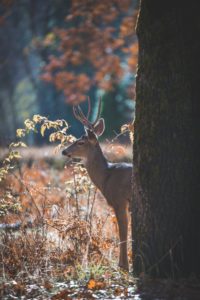 Not every property can support a viable agricultural operation. This is increasingly true as the average size of rural properties decreases. Texas A&M’s Natural Resources Institute estimates that agricultural operations less than 140 acres lose money, on average. Highly variable rainfall, steep topography, eroded and unproductive soils, and decreasing property size make agriculture particularly challenging in the Hill Country. Property sizes increase to the west, but rainfall declines, reducing productivity rapidly.
Not every property can support a viable agricultural operation. This is increasingly true as the average size of rural properties decreases. Texas A&M’s Natural Resources Institute estimates that agricultural operations less than 140 acres lose money, on average. Highly variable rainfall, steep topography, eroded and unproductive soils, and decreasing property size make agriculture particularly challenging in the Hill Country. Property sizes increase to the west, but rainfall declines, reducing productivity rapidly.
Farming and ranching are hard work, and as landowners age, they may not be capable of continuing their operation. The next generation of buyers and owners may lack the desire or ability to manage an agricultural operation. Even landowners who wish to continue agriculture may have areas that are unsuitable without substantial investment in fencing or other infrastructure, or their properties may require an extended period of rest.
To encourage conservation of open-space lands like these, the Texas Tax Code includes wildlife management in the definition of agricultural use. This gives landowners a viable option to keep their open-space taxes and hang on to their land when traditional agriculture is impractical or undesirable for their property. In order to qualify for open-space using wildlife management, you must have an existing open-space valuation. In other words, a property without an open-space valuation cannot be transferred directly to wildlife management as a form of agricultural use.
For properties already under agricultural valuation, you must prepare a wildlife management plan according to your ecoregion’s guidelines and conduct a minimum of 3 out of 7 wildlife management activities annually on your land: 1) habitat control; 2) erosion control; 3) predator control; 4) providing supplemental supplies of water; 5) providing supplemental supplies of food; 6) providing shelters; and/or 7) making census counts to determine population. Unlike with other agricultural uses, the intensity standards for wildlife management activities are not set locally, but rather by the Texas Parks & Wildlife Department’s Comprehensive Wildlife Management Planning Guidelines for each ecoregion.
Wildlife management use is limited to native wildlife. Managing a property primarily for exotic animals will not qualify under wildlife management use. Other agricultural uses such as grazing and beekeeping can occur on a property in wildlife management, but they cannot be the primary use – wildlife management must take precedence over other uses.
There are many benefits to managing for wildlife. Landowners can maintain an existing open-space valuation while eliminating the need for fencing, livestock veterinary care, crop planting and harvesting, overgrazing, and other expenses and challenges associated with farming and ranching. Instead of struggling to manage grazing on land that may require 40-80 acres or more to support one cow, they can focus on letting native vegetation flourish to the benefit of wildlife including songbirds, Wild Turkey, and pollinators, or their favorite game animals for hunting. The natural beauty of a well-managed wildlife property is attractive to potential buyers as well. The productivity value of a property under wildlife management is the same as whichever agricultural use the property was in prior to converting.
There is no minimum size requirement to qualify for wildlife management unless your property was reduced in size in the tax year immediately preceding your application. To apply for wildlife management the written wildlife management plan and the standard open-space application must be submitted to your appraisal district by the April 30th deadline.
Why are open space lands important?
- Open-space lands produce our food, fiber, and timber
- They protect the natural beauty of Texas while catching, cleaning, and filtering our water
- They provide habitat for our wildlife – from butterflies to bobcats, from dragonflies to deer
This tax benefit helps protect these lands from being sold “just to afford the property taxes.” Despite the significantly lower tax bills on open-space lands, they still generate more tax revenue than they cost in government services according to the American Farmland Trust*. Remember that landowners still pay market value taxes on their structures and any residential land on the property. Only the land used for agriculture or timber production gets the special valuation.
Resources:
- Texas Parks & Wildlife Department – Create statewide guidelines for wildlife and provide technical assistance
- AgriLife Extension – Provide technical assistance
- Your Central Appraisal District
- Plateau Land & Wildlife Management – Turn-key services including wildlife management plans, completion and filing of open-space applications, activity services, biologist surveys, appraisal district representation by Registered Property Tax Consultants, wildlife products, wildlife and habitat technical assistance
- Braun & Gresham – Eco Lab assistance and landowner legal matters including conservation planning, condemnation, estate planning, and more
If you’re interested in learning more about your property tax valuation options, specifically Wildlife Management, Plateau can help. Contact us at (512) 894-3479 or [email protected] if you have questions, or would like to speak with a member of our team about purchasing a Wildlife Management Plan.
*American Farmland Trust Cost of Community Services Studies 2016
Back to TopBack to Top
Service Spotlight: 2022 Winter Webinar Series
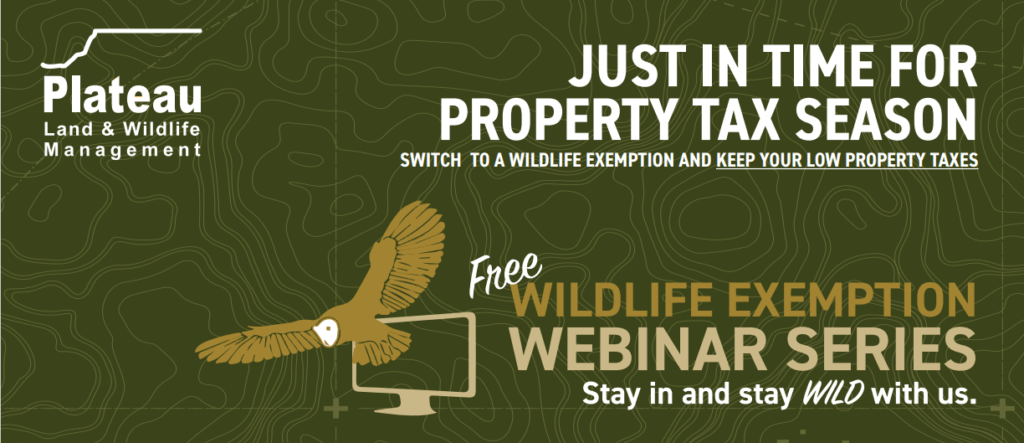
COMING SOON: Plateau’s 2022 Winter Webinar Series
Ready to learn more about Wildlife Management options for your property?
Join us 5:45 – 7:00 pm each Thursday evening from January 13 to March 3 as Plateau Land Specialists and Staff Biologists host FREE educational webinars for landowners. Whether you’re a new landowner or already in Ag or Timber, everyone is invited to join us for our 2022 Wildlife Exemption Webinar Series. Connect with experts and learn how to make the switch to a Wildlife Management Exemption.
Listen along from your computer as our experts cover a variety of land ownership, wildlife management, and Texas ag exemption topics. Get answers to your questions about making the switch, learn about filing deadlines, requirements for activities and record-keeping, and more.
Special Landowner Topics Presented By: Texas Agrilife, Cedar Eaters, and Capital Farm Credit.
View topics and featured speakers and register for upcoming events by visiting Plateau’s Event Directory.
For questions or more information, contact [email protected] or (512) 894-3479.
Eminent Domain: Your rights as a landowner
By Patrick L. Reznik, Braun & Gresham Attorney and Counselor
As the population grows, so does the need to transport oil and gas, sewage, electricity, water, and people across the state. To satisfy demand, Texas agencies and some private companies have been given the power to take privately-owned land for “public use.” The power to do this is called eminent domain. The process they have to go through to get the land is known as condemnation. Eminent Domain attorney Patrick L. Reznik will outline the process of eminent domain, discuss your rights as a landowner and provide examples of current projects in Texas such as the Permian Highway Pipeline.
If you have questions or concerns about eminent domain or condemnation, Braun & Gresham can help. We work with landowners to develop a strategy that meets their needs, taking into consideration that some clients might want to protect their land and views, while others might be willing to take the line or road but want to get the most money possible. We have a long history of relationships with industry leaders, making the negotiation phase of condemnation much more fluid and transparent for our clients.
Please contact Braun & Gresham at (512) 894-5426 or email [email protected].
News for Texas Landowners
Owning Your Piece of Texas program announced, starts Feb. 7
Article by Texas Agrilife
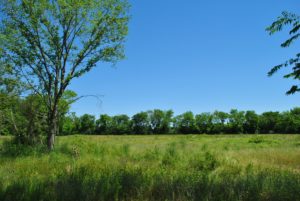
The 2022 dates for the Owning Your Piece of Texas: Key Laws Texas Landowners Need to Know program have been announced.
Three sessions of the Texas A&M AgriLife Extension Service event will take place Feb. 7 in Conroe, March 14 in Fort Worth, April 8 in Burnet, and Sept. 12 in Fredericksburg. The cost is $75 and advance registration is required for each event at https://tx.ag/AgLawEvents22. All attendees will receive a hard copy of the “Owning Your Piece of Texas: Top Laws Texas Landowners Need to Know” handbook. Lunch will be provided.
The Conroe event will be from 9 a.m.- 3 p.m. at Tom LeRoy Educational Building, 9020 Airport Road. The details for the Burnet…
In Texas Supreme Court case, state argues that Dallas-Houston bullet train developer can’t use eminent domain
Article BY ALEXA URA for The Texas Tribune

The Texas attorney general’s office has put its weight behind a landowner’s case against the companies developing a controversial Dallas-Houston bullet train, arguing they can’t force people to sell parcels needed for the high-speed rail project.
Weighing in on the matter at the invitation of the Texas Supreme Court, the attorney general’s office offered the latest twist in the nearly decade-long fight over a 240-mile line that would connect Dallas and Houston. While the project has picked up support from leaders of urban areas, it’s encountered hard resistance from residents of the rural counties on its proposed path. One of those residents, Leon County landowner James Miles, sued Texas Central after the private company sought permission to survey his 600-acre property in 2015…
Record-breaking December heat could have a huge impact on local wildlife
Article by Eric Henrikson for KXAN Austin

AUSTIN (KXAN) — This month’s unusually warm weather may have made heading outdoors a little more bearable, but people aren’t the only ones out enjoying the weather.
“I’ve been getting tons of mosquito complaints lately,” says entomologist Wizzie Brown with Texas A&M’s Agrilife Extension Service. “People were just like, ‘Its December, why are the mosquitoes out?’ and I’m like, ‘It’s 80 degrees, they’re gonna be out.’“
Brown says that by this time of the year, many insects and animals should have already begun a process called “overwintering,” where they go dormant by either hibernating or seeking shelter…
Texas National Wildlife Refuges Grow by More than 7,000 Acres in 2021
Article by The Palestine Herald
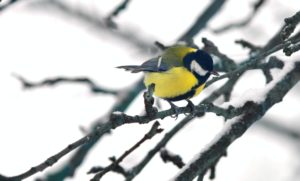
In 2021, the U.S. Fish and Wildlife Service added nearly 7,000 acres of public land to the National Wildlife Refuge System in Texas. This brings the total number of Service-managed lands in the state to nearly 700,000 acres at 19 National Wildlife Refuges and three National Fish Hatcheries.
Spanning a variety of ecosystems, from the coastal prairie in the Rio Grande Valley to the hardwood forests in East Texas, these acquisitions aim to connect, protect and restore wildlife habitat and increase recreational access for Texans.
“These public lands offer access to a host of popular activities like hiking, hunting and fishing, while also providing vital habitat…
Study investigates reintroduction of ocelots to native Texas range
Article by Texas A&M Natural Resources Institute

The Texas A&M Natural Resources Institute, a unit of Texas A&M AgriLife, in partnership with East Foundation, the Caesar Kleberg Wildlife Research Institute, Lindner Center for Conservation and Research of Endangered Wildlife at the Cincinnati Zoo, the University of Tennessee Comparative and Experimental Medicine Program and Center for Wildlife Health, Texas Parks and Wildlife Department, and the U.S. Fish and Wildlife Service, is launching a project to study the viability of potential actions designed to establish a new population of ocelots (Leopardus pardalis) in South Texas to both help prevent their extirpation and increase their numbers in the U.S. Through this project, officially called “Developing and Assessing Strategies for Reintroducing Ocelots to Historical Texas Habitat,” the seven partners are exploring the feasibility of reintroducing the endangered ocelot to a portion of their historical range…
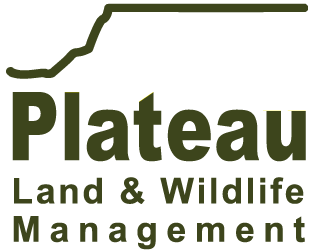






Sorry, the comment form is closed at this time.